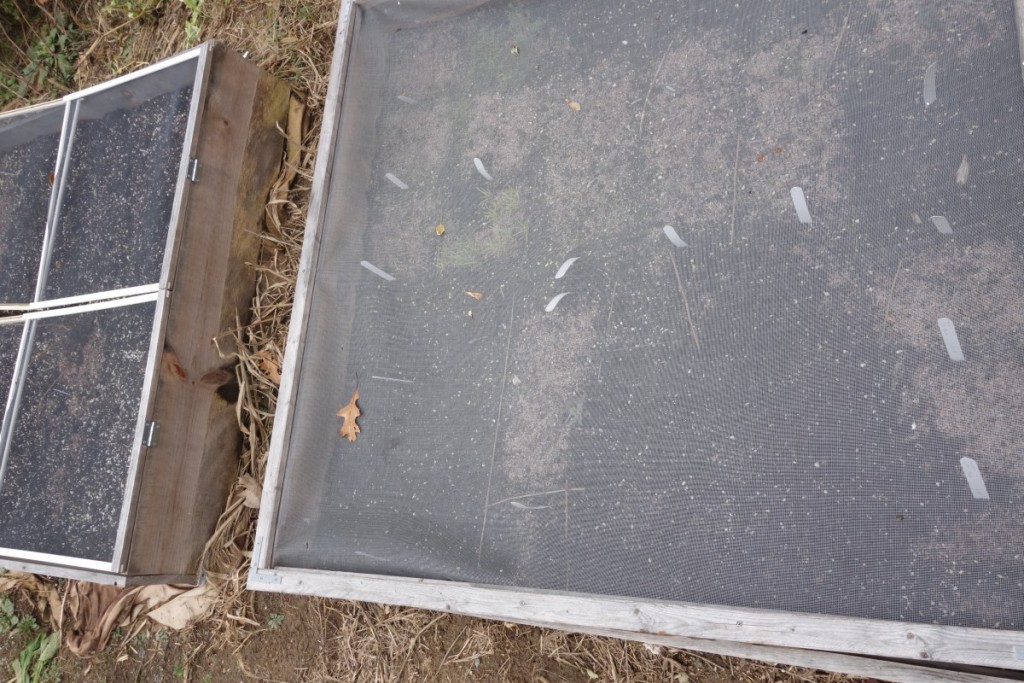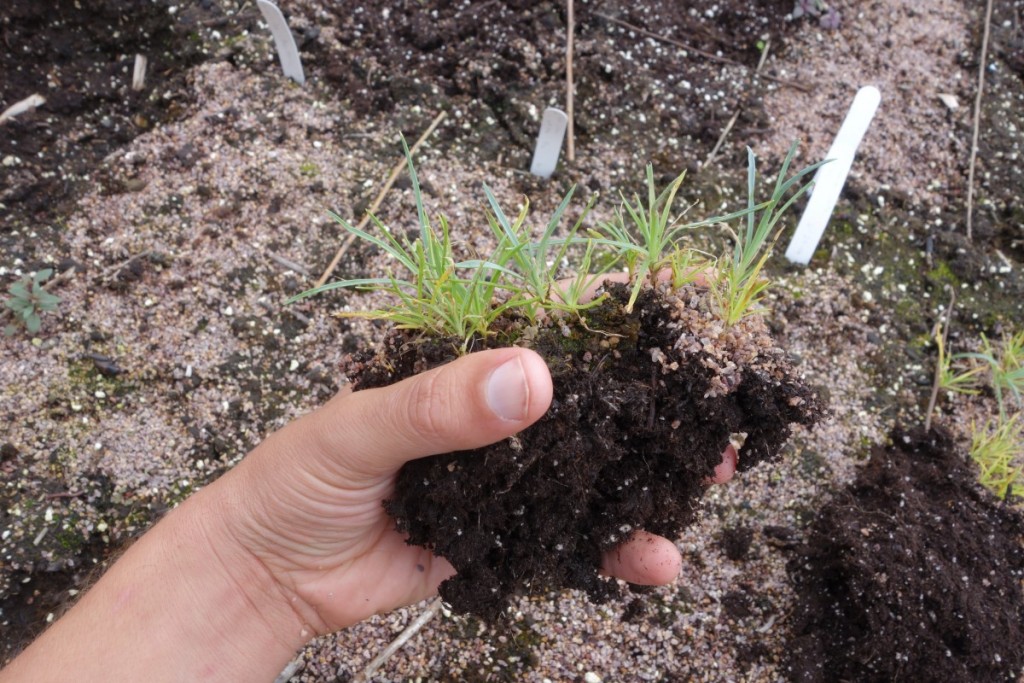You may think of spring as the time for seed sowing, but I do a lot of seed planting now, in the fall. The reason is that most of the cold hardy perennials, trees and shrubs that I like to grow produce seeds that require cold stratification.
This simply means that they require a period exposed to cold temperatures while the seeds are moist and hydrated before they will germinate.
The requirement for cold is a pretty straight-forward adaptation to life in cold climates. Seeds that ripen in the summer and fall might not have time to get established before winter if they germinated right away. The requirement for cold means the seeds don’t actually sprout until spring, giving them a full growing season to get ready for the next winter.

You can — and I used to — give seeds this cold period in the refrigerator. Three months in the fridge in a plastic bag with a damp paper towel to keep the seeds moist is long enough for most everything, though the exact period of cold required varies by the plant. The fridge works, but I think it is way easier to just do it outside. So the past few days I’ve been busy sowing seeds out in my outdoor seed beds. They’re just raised beds, filled with potting media, and covered with a screen lid to limit the number of weed seeds that blow in and keep disruptive animals out. I plant my seeds in the fall. Come spring, after the seeds have had their dose of cold, they sprout.

Once the seedlings have grown on a while, I dig them out, separate the individual plants, and put them out into their final locations in the garden.

I do this with more and more seeds every year, even for perennials that don’t require a cold period to germinate, simply because it is so easy. No fussing around with lights or checking the calendar or even much watering. Just plunk the seeds in, and dig out the plants once they are big enough.
I agree that it is more convenient to sow the seeds now – albeit with things like hardy cyclamen i sow them as soon as i collect them.In my case i sow them in seed trays which usually go into my unheated greenhouse where they get plenty of cold but i have control over such as the watering. Some of my trays stay outside until they germinate but I find that their Spring survival is better if I bring them in as soon i see them emerging…out of the liverwort and moss usually!
I’m liking this method Joseph. I’ve done winter sowing in containers but this cold frame/screen cover idea is genius. Now to find a spot!
I live in a dry climate with low winter rainfall. This idea sounds just about right.
Hi
Nice technique, do you recommend this “Cold Stratification” with fruit seeds too, e.g. strawberries ?
Absolutely — it will work with just about anything that originates in cold climates. Basically, you are just doing a sheltered, controlled version of what happens in nature.
Hi there!
I’ve been wondering if this method will work with self seeding annuals as well. Chamomile, Blue Flax, Tithonia etc. What do you think?
Thanks very much!
This looks like it might be a good use of my tomato bed which lies empty all winter. Hmmm…. Now to go and collect seeds and get some screening and it looks like I’ve got my weekend plans made!
Kudos on presenting clear and concise descriptions of seed dormancy and stratification. The one added challenge to outdoor fall sowing is excluding mice/voles,
Put hardware cloth on the bottom of the bed(s).
This is only applicable for raised beds used for production of annual plants. Hardware cloth will interfere with root growth of woody plants, so it should not be used in landscapes.
I planted my perennial seeds in mid-November, after the first hard frost. Problem is, we’ve been having an unusually mild December here in Chicago…it was 61 degrees this past weekend…and my seeds sprouted! Can you tell me if they’ll survive a “real” Chicago winter if & when it arrives? Thanks.
It is very hard to know how well they will survive. In general I’d expect new seedlings to be significantly less cold tolerant than a mature plant, but it will vary a lot by species. If it was me, I’d try giving them some extra insulation once it does get cold and hope for the best. Sorry I don’t have a more precise answer!
Hey, I’m just glad you answered! Thank you! Anyway, We’ve gotten to below freezing and a few of the seedlings are still hanging in there. It’s a mix of native perennials, so I’m thinking that some might survive. We shall see!
Thanks again!
That’s why it’s better to start this process later in winter such as in late December or even later still.
excellent info!!!–thank you-lou desena,ct gardener-
I put my grape seeds in a Ziploc bag with some slight Damp coconut coir, and store them on the back porch. Temperature is in the 40s to 50/degrees F., depending on the weather.
I love this method. I tried it out of frustration last spring (I planted seeds in a flat, stuck the flat out on the porch in March, and let nature do its worst; I did take care to make sure the soil was moist when it we had warm/dry spells). It worked like a charm. In my area (wooded area in southwest Michigan), rabbits and groundhogs munch up all the seedlings if I plant seeds right out in their beds. So I used to start them indoors and always had mixed results (unlike Dr. Chalker -Scott who knew what she was doing and had consistent results). This is a great compromise that solves both problems. Love letting nature do its job and stop pretending I am smarter than she is.